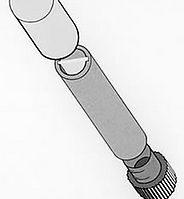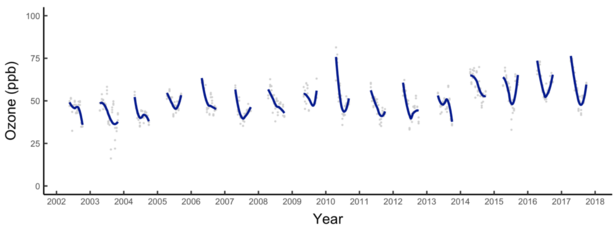

Ozone (O3) is a secondary pollutant that is formed during a photochemical reaction when an oxygen atom is separated from a nitrogen dioxide molecule (NO2) under the influence of sunlight and combines with an oxygen molecule (O2). Ozone is an irritant gas, affecting living beings and materials.
Especially in the summer months, O3 is absorbed by plants. It then enters the leaves or needles through the stomata and damages the cell membranes. As the number of damaged cells increases, the photosynthetic capacity decreases and growth is slowed down.
Passive collectors are an efficient and cost-effective method for measuring ozone concentrations in the field when electricity is not available. The passive sampler consists of a tube containing a chemically treated filter paper. The average ozone concentration can be determined from the chemical reaction between ozone and the components on the filter paper.
Following a protocol developed by ICP Forests, an international programme on air pollution and its effects on the forest, we monitor ozone concentrations every season (April-September) at selected LWF sites.
Contact ¶
Publications ¶
For further information on the influence of ozone on the growth of trees, please read:
- Cailleret M, Ferretti M, Gessler A, Rigling A, Schaub M (2018) Ozone effects on European forest growth - towards an integrative approach. Journal of Ecology, 106, 4: 1377-1389. doi: 10.1111/1365-2745.12941
- Schaub M, Calatayud V, Ferretti M, Brunialti G, Lövblad G, Krause G, Sanz MJ (2016) Part XV: Monitoring of Air Quality. In: UNECE ICP Forests Programme Co-ordinating Centre (ed.): Manual on methods and criteria for harmonized sampling, assessment, monitoring and analysis of the effects of air pollution on forests. Thünen Institute of Forest Ecosystems, Eberswalde, Germany, 11 p. + Annex [http://icp-forests.net/page/icp-forests-manual] ISBN: 978-3-86576-162-0.
